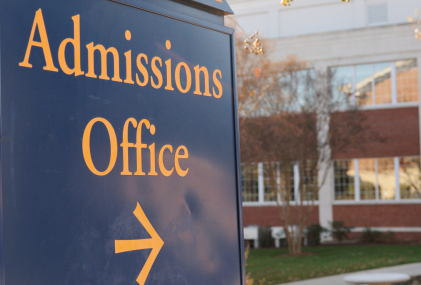 It’s May 1, people. Yes, May Day. But, if you have a child who applied to college this year, today is significant for another reason. It’s Decision Day. Deposit Day. Damn But They’re Really Leaving Home Day.
It’s May 1, people. Yes, May Day. But, if you have a child who applied to college this year, today is significant for another reason. It’s Decision Day. Deposit Day. Damn But They’re Really Leaving Home Day.
I thought we were going to have to wait until 11:59 tonight before my daughter finally made up her mind. But, last Sunday, after much sturm und drang, numerous college visits—we saw several school three times—scouring the Fiske Guide, College Prowler and the schools’ websites, and endless discussions with her high school advisor, us, friends, friends of friends, neighbors, relatives, neighbors of relatives and relatives of neighbors, she calmly announced her choice.
When we began our college search, my girl quickly realized she wanted a small liberal arts college in the Northeast. (We did not look at the Ivies or “little” Ivies.) She was beguiled by the beauty of some of the New England and New York State campuses. And the nicer dorms and better food. But, digging deeper, she came to see that, other than academics and distance from home, the one aspect that was truly important to her—a Chinese adoptee—was diversity.
All the schools talk about it, and I don’t doubt their sincerity (except for one—more about that later). Many have active recruiting and support programs aimed at increasing, and maintaining, minority enrollment. It’s statistically true that minority kids graduate from college at a lower rate than white students.
Despite these good intentions, we became aware on our college visits that there were very few young people of color around. At one college’s admitted students’ day, we kept seeing the same Asian family with their son—the only other Asian admittee we encountered—and joked that if we saw them ten times we got to count them twice. In the end, my daughter choose a college that has an Asian-American enrollment of 13%, a considerable percentage compared to the 2%-7% (according to Fiske) at the other schools she considered.
Again, it’s not that the schools don’t reach out to their admitted minority students. They all held a special welcome for, as one college somewhat coyly put it, the “traditionally underrepresented” admittees. My daughter refused to attend any of them. Being transracially adopted, she has a complicated, and somewhat confused, idea of just “what” she is and how she wants others to see her. She wished the school had just treated her as a regular admission. Being Asian or Hispanic or Black does not automatically mean you need special handling.
Which brings me to the “elite” school in upstate New York with a minority student program it probably needs to amend. My daughter was accepted by the college—on the condition that she attend a five-week summer session connected to its “Scholars” program and remain in the program the entire time she was enrolled. The college’s website gives the clear impression that most of the “scholars” are kids of color who attended public high schools (as my daughter did). Looking at the details of the summer session, we saw that it included “cultural training” activities. For example, the students are taken out for “fine dining,” implying that these students don’t know which fork to use. What’s more, students are not allowed to bring their computers during the summer program—and their cell phones are confiscated and given back only on weekends. What made the program feel like noblesse oblige was that it was not offered as a helpful option, but as a mandatory condition of admission.
As for the other colleges, I think that inviting the kids of color to a separate admitted-students day reflects the institutions’ awareness of how few of these students are enrolled and their belief that maybe it’s a good idea to have them get to know each other: safety in (small) numbers. It also, perhaps, indicates the schools’ unresolved attitude. They tell the kids, on the one hand, that they belong to the community as much as any white peer, and, on the other, that they are somehow different, in need of extra help. The colleges are in a transitional stage—they have a goal of including more “traditionally underrepresented” students, but haven’t quite figured out how to get more to apply, nor how to welcome the ones who choose to attend.

